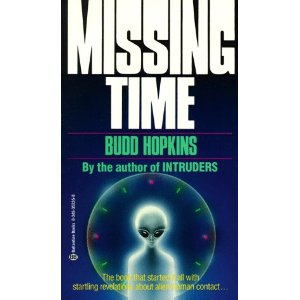
I know a woman who lives in the bell-jar of analysis. She’s a fine person, brilliant, successful, and lovingly committed to her children, though she seems not to like other women all that much. I have a few foibles of my own and I like her, snarkiness and all. It’s just that having dinner with her is a marathon of hearing about her feelings, her feelings about her feelings, her thoughts about her feelings about her feelings, her analyst, her feelings about her analyst, her thoughts about her feelings about her analyst… It’s a closed and airless world, fundamentally solipsistic. Masturbatory.
I have serious qualms about contemporary psychotherapy as it is generally practiced. There’s a lot of horse manure that’s taken as gospel by therapists and by people influenced by therapists. In fact, psychotherapy is one of the current sacrosanct priesthoods, along with “hard science.” Some months ago, I told a few psychotherapists that I didn’t believe in group therapy. Boy oh boy, did they get unpleasant. They wouldn’t admit it, of course. The most self-unaware people in the world are psychotherapists. But it was a lot like admitting to an Inquisitor that the Holy Trinity is bunk. Be careful when you poke someone’s sacred cow!!
Ultimately, I don’t think talk psychotherapy works. It’s brought general silliness and brainlessness into the culture. It’s an exercise in narcissism, self-indulgence, and inanity. People are afraid to think for themselves, and they are afraid to use their discernment–because “everyone is ok” and all that drivel. Values have been discarded in favor of bland lack of judgement that masquerades as tolerance. Personal accountability has been sloughed off.
So what does work? Because people need help: we are all suffering, to some degree. Orgone boxes work. Everyone should build one and install it in their living room. Sit in it for an hour a day and open the flow in the body-mind-spirit-psyche unit that we call our human self.
Orgone boxes work because of, as John Pierrakos writes, “Three main theses… the first is that the human person is a psychosomatic unity. The second is that the source of healing lies within the self, not with an outside agency, whether a physician, God, or the powers of the cosmos. The third is that all of existence forms a unity that moves toward creative evolutions, both of the whole and of the countless components. … The basic substance of the person is energy. The movement of that energy is life. The freer the energy movement…the more intense the life..”
Sitting in an orgone box is like charging a battery, the battery being the human being. As the person is filled with energy, blocks to free energy movement start to shift and dissolve. Those blocks are multidimensional: they affect the body, the mind, the emotions, and the spirit. They have to affect all those dimensions because those dimensions are yoked together, inseparably. There is no possible way to change the mind without also affecting the body, spirit, and psyche. And so forth. On the psychological level, a block is a neurosis or phobia, etc. With the free flow of energy movement restored, those can melt away like ice in hot water.
Orgone, as Wilhelm Reich defined it, is primordial cosmic energy. The Chinese call it Chi. The Hindus call it Prana. The Japanese call it Ki. George Lucas called it ‘The Force.’ Physicist William Tiller calls it the Quantum Domain. Everything is energy, and orgone is the fundamental, root energy substrata.
There are a lot of implications to this axiom. If you posit that everything is energy and start to pursue that into the realms of human consciousness, a multitude of seeming paradoxes, puzzles, oddities, and anomalies arise. One of those strange consequences of energy and consciousness is paranormal perception. Patanjali called them siddhis and warned against getting distracted by them. But everyone who meditates regularly eventually, whether after 20 years or 20 minutes, stumbles onto clairvoyance, clairaudience, precognition, telepathy–past life recall.
I read with some amusement an article in The New York Times (Jan 6, 2011) that described the angry furor over a paper that gives strong evidence for extrasensory perception. These kinds of papers are published all the time, attracting little notice. This time, however, it’s the prestigious Journal of Personality and Social Psychology which is publishing the study. Some traditionalist psychologists are just outraged that a study that passed a stringent peer review would be published–when the study shows evidence for ESP. Remember what I said about poking people’s sacred cows?
So what to do if you’re not up for parking an orgone box in your den, in front of the treadmill that holds your dirty clothes? We are relational creatures, after all. It is human to want to move your energy in concert with another person. Then find a core energetic therapist. Go to a Barbara Brennan School of Healing trained healer, someone who is in supervision.
I was lucky enough to have a session with John Pierrakos before he died. He was a sparkly, gray-haired elf of a man, radiating both kindness and genius. I worked in my underwear and never before or since have I felt so safe, and so understood. But he teased me a little, too. “Traci has to know,” he told me, in a voice that was both amused and compassionate. I think of that often, especially in regards to foibles and personal bell jars.








